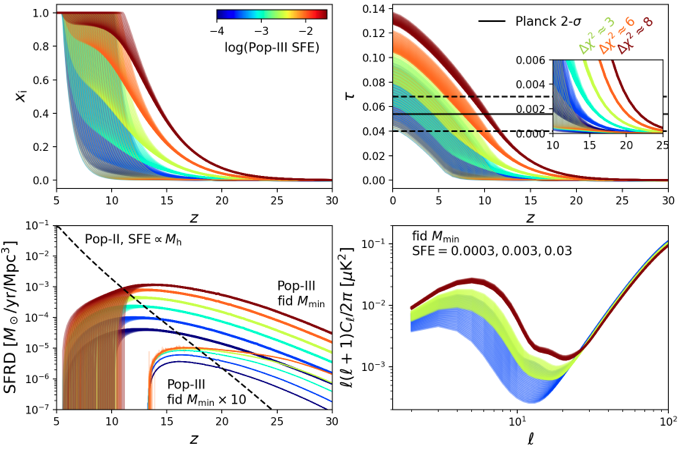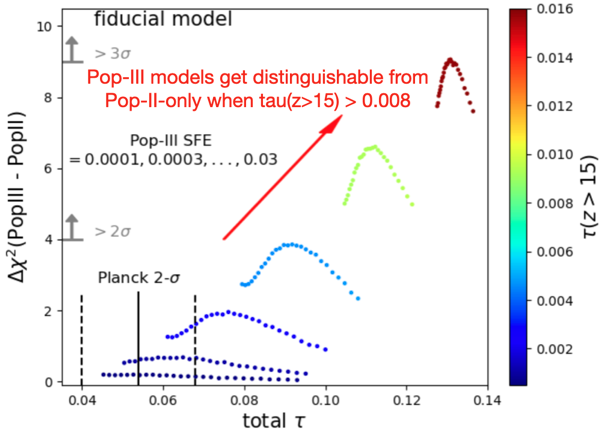Constraining Pop-III models with CMB
Reionization leads to large-scale anisotropies in the cosmic microwave background (CMB) E-mode polarization via Thomson scattering of CMB photons and free electrons. The CMB E-mode power spectrum has long been used to constrain the global reionization history, which is usually encoded by the Thomson scattering optical depth τ. Since earlier ionization results in E-mode anisotropies at smaller scales, the shape of the E-mode power spectrum may help probe reionization by the first generation of stars (Pop-III stars) at z>15.

To test whether future CMB surveys can detect Pop-III reionization, I constructed a semi-analytic model of Pop-III star formation and explored a wide range of Pop-III models and reionization histories (Fig. 1 above). Surprisingly, I found that current constraints on τ and the endpoint of reionization already rule out most of the Pop-III parameter space, such that very extended high-redshift ionization is not allowed (Fig. 2 below). Being the first one to systematically explore the possibility of constraining Pop-III models using the CMB, my work shows that future CMB surveys are unlikely to help constrain Pop-III models, unless Pop-III star formation follows much more exotic scenarios.
